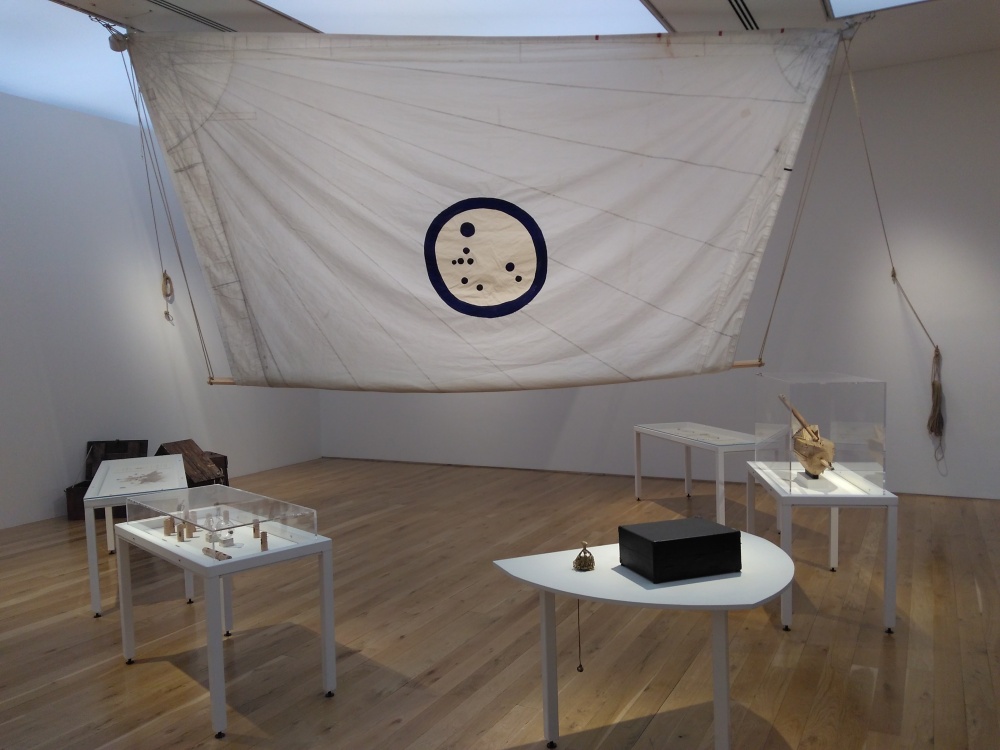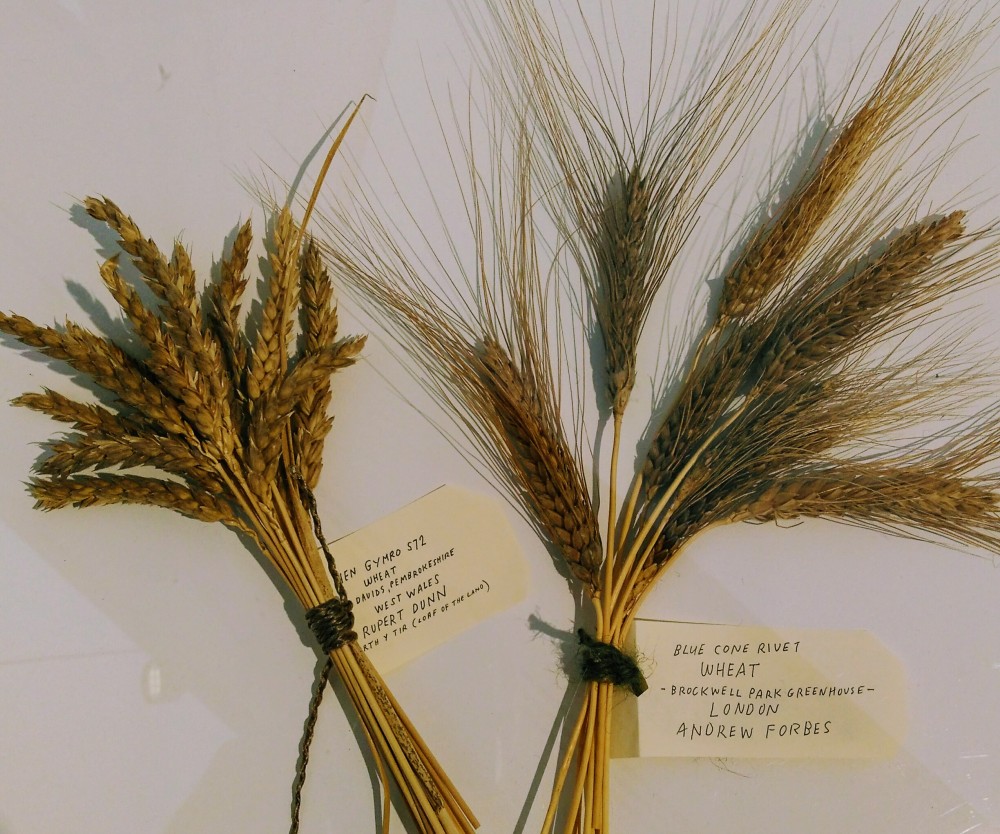Back before Christmas I went to the National Museum with fellow members of the Welsh Grain Forum to meet Amy Franceschini and some of her companions on the Seed Journey, a year-long sailing expedition from Oslo to the Middle East that had been shortlisted for Artes Mundi 7. They were in the throes of setting out the gallery so recently I went back to see the completed installation.
Amy and friends are sailing on an 1895 wooden sailboat, collecting and transporting seeds that have been ‘rescued’ in various ways back to the Fertile Crescent.

The displays contain three grains with fascinating stories:
- Svedjerug (Forest Finn Rye), Norway
Forest Finns was the name given to Finnish migrants in Sweden and Norway in the late 16th and early 17th centuries. In 1973 a Norwegian historian visited a rihii (sauna and barn) to look for grain. After his initial search found nothing, he took down the ceiling and found nine grains of rye. He convinced the local church to plant them; seven germinated. That first season of growth resulted in 7000 grains that enabled Svedjerug to move into production.
- Bainse Bygg Barley, Russia
Nikolai Vavilov was a Russian scientist who devoted his life to the study and improvement of cereals, and created the world’s largest collection of plant seeds at Leningrad. On Stalin’s orders he was arrested in 1940 and died of starvation three years later. In his absence, staff protected the collection throughout the siege of Leningrad. Their commitment to preserving the seeds was total; nine of them chose to die rather than use the grain for sustenance.
- Lykov Rye, Southern Siberia
When the Bolsheviks killed his brother, Karp Osipovich Lykov fled with his family to the Siberian forest. They travelled light, taking the bare essentials, including a handful of grain. Living 160 miles from the nearest settlement, their diet was based on what they could grow in the garden and forage from the forest. During a particularly harsh winter in 1961, Lykov’s wife died of starvation. The following spring a single grain of rye sprouted in the garden. Lykov ensured that this shoot flourished and from it he rebuilt his grain store and livelihood.

Artes Mundi 7 closes on 26 February so you’ve only got a few weeks to take a look in person, or there’s the Artes Mundi video.
They’re sailing until the summer so you can follow the journey on the Futurefarmers site and Twitter.
Coincidentally I went to this exhibition just yesterday. I found it so moving to be so actually close to the descendants of V’s barley seeds. … Enjoying your blog…
LikeLike